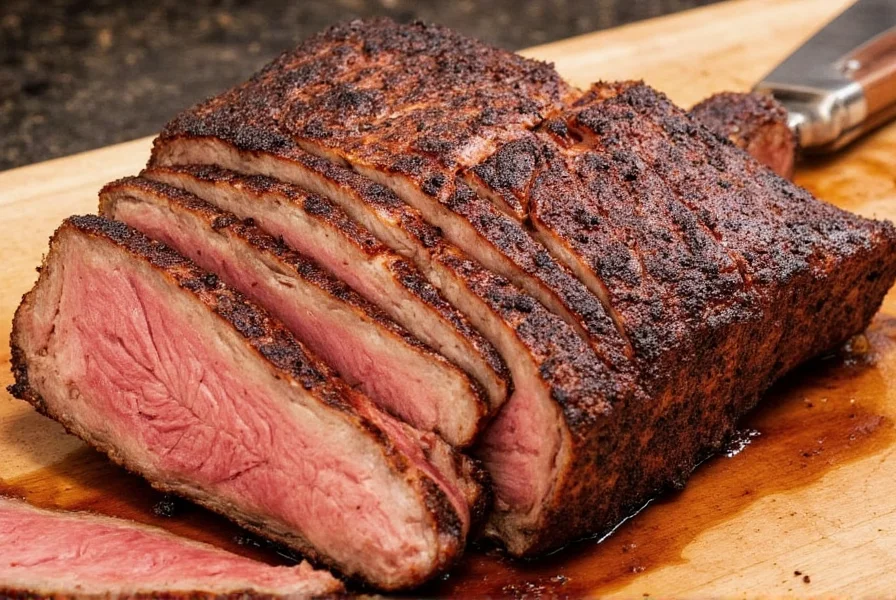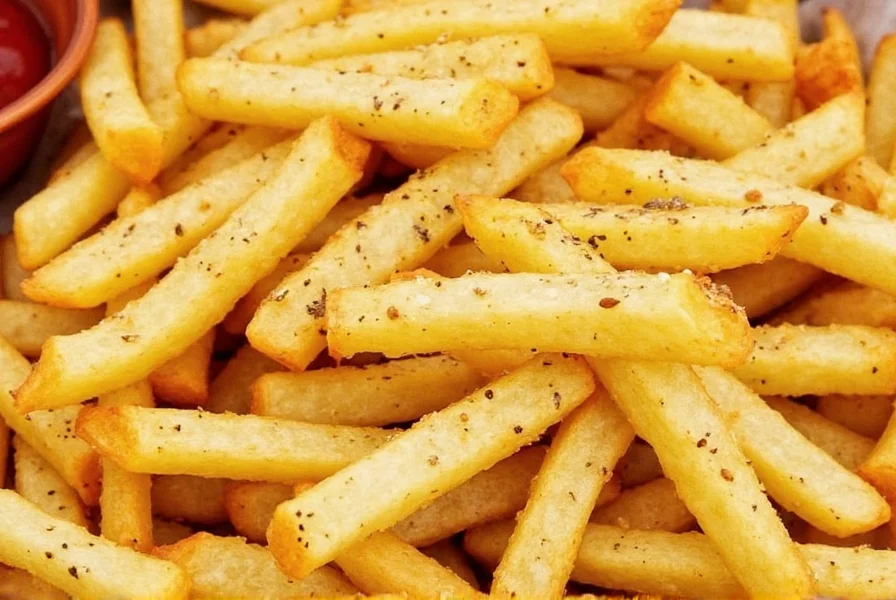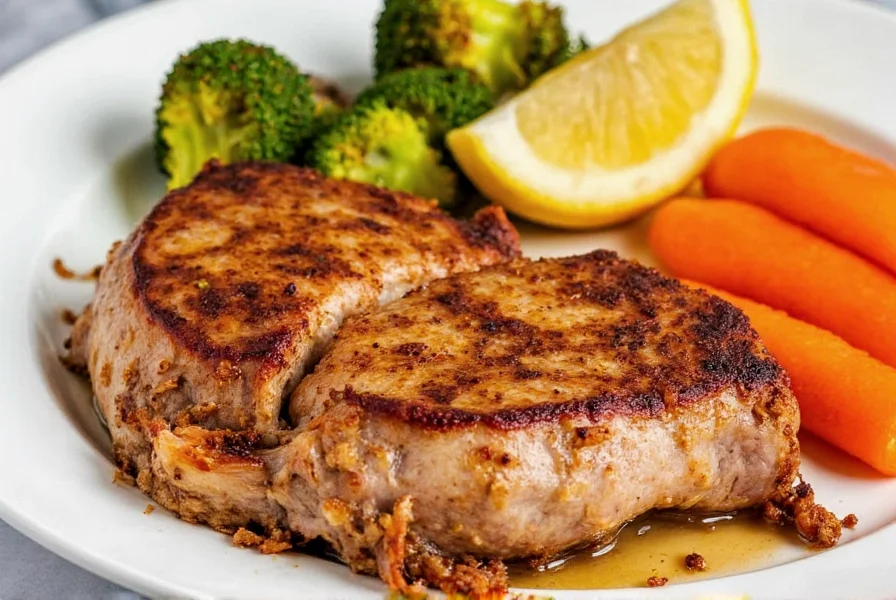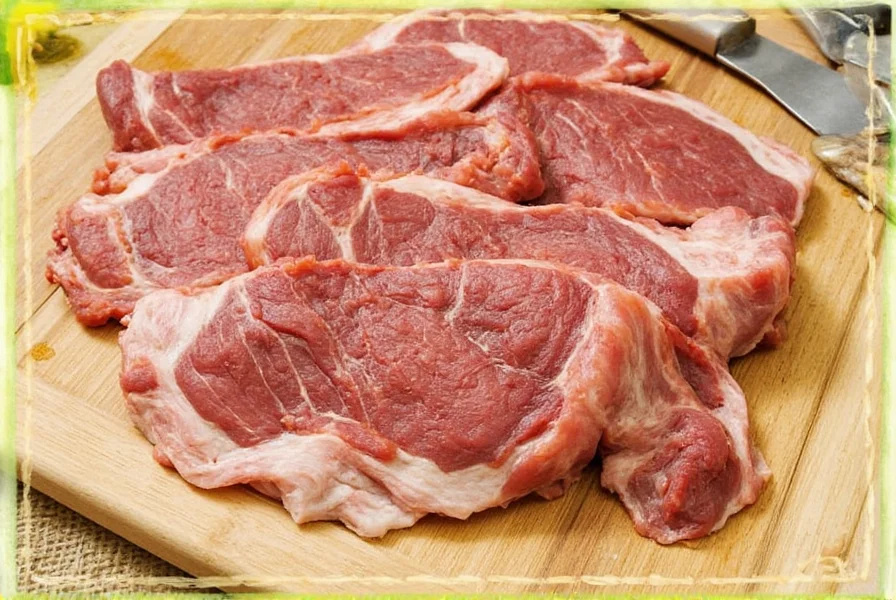Table of Contents
- Introduction to Seasoning for Baked Pork Chops
- Essential Spices and Herbs for Baked Pork Chops
- Seasoning Techniques That Make a Difference
- Buying Guide: Choosing the Best Seasonings
- Pro Tips for Perfectly Seasoned Baked Pork Chops
- Frequently Asked Questions About Seasoning Pork Chops
- Conclusion: Spice It Up!
Introduction to Seasoning for Baked Pork Chops
Seasoning baked pork chops properly is essential for achieving restaurant-quality flavor at home. The right combination of spices can transform simple pork chops into a delicious, flavorful meal that impresses family and friends. This guide provides clear, actionable advice on selecting and applying seasonings to create perfectly seasoned baked pork chops every time.
Whether you're a beginner or experienced cook, understanding how to balance flavors and apply seasonings correctly will help you avoid common mistakes and consistently achieve delicious results. Let's explore the fundamentals of seasoning pork chops to elevate your cooking skills.

Essential Spices and Herbs for Baked Pork Chops
The foundation of great pork chop seasoning is balance. You want to enhance the natural flavor of the meat without overpowering it. Here are the essential spices and herbs that work best for baked pork chops:
- Garlic Powder: Provides savory depth without the sharpness of fresh garlic. Ideal for even flavor distribution.
- Onion Powder: Adds mild sweetness and earthy notes that complement pork's natural richness.
- Paprika: Offers color and subtle smokiness, especially smoked paprika for deeper flavor.
- Black Pepper: Essential for heat and complexity; freshly ground provides the best flavor.
- Dried Thyme: Fragrant herb that pairs beautifully with pork's flavor profile.
- Kosher Salt: The foundation of any seasoning blend; enhances all other flavors.
These ingredients can be combined in different ratios to create unique flavor profiles. For example, a classic rub might include 1 teaspoon salt, 1/2 teaspoon black pepper, 1 teaspoon garlic powder, 1 teaspoon onion powder, and 1 teaspoon paprika per pound of pork chops.
| Spice | Flavor Profile | Best Used With |
|---|---|---|
| Garlic Powder | Savory, umami | Pork, chicken, vegetables |
| Onion Powder | Mild sweetness, earthy | Pork, stews, roasted veggies |
| Paprika | Smoky, slightly sweet | Pork, grilled meats, soups |
| Black Pepper | Heat, complexity | All meats, sauces, marinades |
| Dried Thyme | Fragrant, herbal | Poultry, pork, vegetable dishes |
Seasoning Techniques That Make a Difference
How you apply seasoning is just as important as what you use. These techniques ensure maximum flavor penetration and delicious results:
- Generous Rubbing: Rub seasoning directly onto pork chops 30-60 minutes before baking to allow flavors to penetrate the meat. For best results, pat the chops dry first to help the seasoning adhere.
- Marinating: For deeper flavor, marinate pork chops in a mixture of oil, acid (like lemon juice or vinegar), and seasoning for 1-2 hours. Avoid marinating longer than 4 hours with acidic ingredients to prevent texture changes.
- Layering Flavors: Start with salt and pepper, then build with other spices. For example: salt first, then garlic powder, then paprika, and finally herbs like thyme.
- Using Fresh Herbs: While dried herbs are convenient for rubs, fresh herbs like rosemary or thyme add vibrant flavor when added during the last 10 minutes of baking or as a garnish.
Remember: The goal is to enhance the natural flavor of the pork without masking it. Start with simple combinations and gradually experiment with more complex blends as you gain confidence.
Buying Guide: Choosing the Best Seasonings
With so many seasoning options available, it's important to choose quality products that will deliver consistent results. Here are top-rated seasonings specifically recommended for baked pork chops:
1. McCormick Pure Ground Black Pepper
Why it's best: Freshly ground for maximum flavor, with consistent texture and potency. Unlike some cheaper alternatives, this pepper has a clean, sharp heat without bitterness.
Best for: All types of pork chop seasoning, especially as the foundation of your rub.
2. Penzey's Smoked Paprika
Why it's best: Made from high-quality peppers smoked over oak wood, providing authentic smoky flavor without artificial additives. The color is rich and vibrant, enhancing the appearance of your dish.
Best for: Adding depth and smokiness to pork chop seasonings, especially when you don't have access to a grill or smoker.
3. Simply Organic Garlic Powder
Why it's best: Made from 100% dehydrated garlic cloves with no fillers or anti-caking agents. The flavor is robust and authentic, unlike many commercial garlic powders that taste bland or artificial.
Best for: Adding savory depth to pork chops without the risk of burning fresh garlic during baking.
4. Lawry's Seasoned Salt
Why it's best: A balanced blend of salt, garlic, onion, and paprika that saves time while delivering consistent flavor. The quality ingredients make it superior to generic seasoned salts.
Best for: Quick seasoning for weeknight dinners or when you want a simple, reliable flavor profile.
5. Frontier Co-op Dried Thyme
Why it's best: High-quality thyme with vibrant color and strong herbal aroma. Unlike some dried herbs that lose potency quickly, this thyme maintains its flavor for months when stored properly.
Best for: Adding herbal notes to pork chop seasonings, especially when paired with garlic and onion powders.



Pro Tips for Perfectly Seasoned Baked Pork Chops
Even with the best seasonings, technique matters. These pro tips will help you achieve consistently delicious results:
- Pat Dry First: Always pat pork chops dry with paper towels before seasoning. Moisture prevents spices from adhering properly and can lead to steaming instead of browning.
- Measure Accurately: Use measuring spoons for consistent results. A level teaspoon of salt per pork chop is usually sufficient.
- Let It Rest: After baking, let pork chops rest for 5-10 minutes before serving. This allows juices to redistribute, keeping the meat moist and flavorful.
- Use a Meat Thermometer: Pork chops are perfectly cooked at 145°F (63°C) internal temperature. Overcooking is the #1 cause of dry pork chops.
- Experiment Gradually: Start with simple combinations (salt, pepper, garlic powder) before adding more complex spices. This helps you understand how each ingredient contributes to the final flavor.
Frequently Asked Questions About Seasoning for Baked Pork Chops
Here are answers to common questions about seasoning baked pork chops:
How long should I marinate pork chops before baking?
For best results, marinate pork chops for 30 minutes to 2 hours. Acidic marinades (with vinegar or citrus) should not exceed 2 hours, as they can start to break down the meat's texture. Oil-based marinades can marinate up to 4 hours without negative effects.
What's the best salt-to-pepper ratio for pork chops?
A good starting point is 1 teaspoon of kosher salt and 1/2 teaspoon of freshly ground black pepper per pound of pork chops. Adjust based on personal preference, but remember that salt enhances other flavors while pepper provides heat and complexity.
Can I use fresh herbs instead of dried ones for seasoning pork chops?
Yes, but use about 3 times the amount of fresh herbs compared to dried. For example, if a recipe calls for 1 teaspoon dried thyme, use 1 tablespoon fresh thyme. Add fresh herbs during the last 10 minutes of baking or as a garnish after cooking to preserve their vibrant flavor and prevent burning.
How do I prevent my pork chops from drying out when baking?
Follow these steps: 1) Use a meat thermometer to cook to 145°F (63°C), 2) Pat chops dry before seasoning, 3) Apply a thin layer of oil before adding dry seasonings, 4) Let chops rest for 5-10 minutes after baking. Proper seasoning creates a flavorful crust that helps retain moisture.
What are some alternative seasoning blends for pork chops?
Try these variations: 1) Sweet-spicy: Brown sugar, chili powder, cumin, and smoked paprika, 2) Herb-forward: Rosemary, thyme, sage, and garlic, 3) Citrusy: Lemon zest, coriander, garlic powder, and a touch of cayenne, 4) Cajun-style: Paprika, cayenne, oregano, and garlic powder.
When should I season pork chops (before or after baking)?
Always season before baking for best flavor penetration. For dry rubs, season at least 30 minutes before baking (up to 2 hours for thicker chops). For wet marinades, 1-2 hours is ideal. A light sprinkle of salt or fresh herbs after baking can enhance flavor, but the primary seasoning should happen before cooking.
Can I use the same seasoning for bone-in and boneless pork chops?
Yes, but bone-in chops may benefit from slightly more seasoning (about 25% more) since the bone can absorb some flavor. Bone-in chops also tend to stay juicier during cooking, so you can be slightly more generous with seasonings without overwhelming the meat.
How much seasoning should I use per pork chop?
For a standard 1/2 inch thick pork chop, use about 1/2 teaspoon of dry rub. For thicker chops (over 1 inch), use 3/4 to 1 teaspoon. Always start with less and add more after tasting, as it's easier to add seasoning than to remove it.
Conclusion: Spice It Up!
Seasoning baked pork chops properly is a skill that anyone can master with the right knowledge. By understanding the fundamentals of flavor balance, applying seasonings correctly, and choosing quality ingredients, you can transform simple pork chops into restaurant-quality meals at home.
Remember: The best seasonings are those that enhance the natural flavor of the pork without overpowering it. Start with simple combinations, experiment gradually, and trust your taste buds. With practice, you'll develop your own signature seasoning blends that make your pork chops truly special.
Happy cooking, and may your pork chops always be perfectly seasoned and delicious!










 浙公网安备
33010002000092号
浙公网安备
33010002000092号 浙B2-20120091-4
浙B2-20120091-4